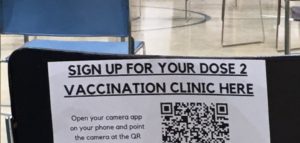“Until every child is well” is the tag line used by Boston Children’s Hospital, the number one pediatric hospital in the nation as ranked by U.S. News and World Report. I am thrilled to share the news that I started as their interim SVP and Chief Information Officer two weeks ago. What an incredible organization to be able to serve. I am excited to be part of a healthcare provider organization again – even though it is temporary.
started as their interim SVP and Chief Information Officer two weeks ago. What an incredible organization to be able to serve. I am excited to be part of a healthcare provider organization again – even though it is temporary.
Boston Children’s treats more children with rare diseases and complex conditions than any other hospital. In addition to caring for the sickest children in the Boston area as well as nationally and internationally, Boston Children’s is a leading research institution. It is home to the world’s largest pediatric research enterprise, and it is the leading recipient of pediatric research funding from the National Institutes of Health.
Boston Children’s is investing $24M in digital health initiatives (D2.0) over a three-year period with solutions for patients, their families, clinicians and administrative staff. Under the leadership of Chief Innovation Officer, John Brownstein, they have an Innovation Digital Health Accelerator (IDHA) which is partnering with many technology start-ups to provide solutions both internally and broadly to others in the healthcare community.
And let us not forget about the importance of an organization’s culture. The public statement on their website says a lot about the kind of organization they are and strive to be:
“Boston Children’s is dedicated to creating a culture where all patients, families, clinicians, researchers, staff, and communities feel empowered and supported. We are committed to working together to support health equity and promote anti-racist practices. This is not merely an aspirational goal, and in August 2020, we shared our formal Declaration on Equity, Diversity and Inclusivity that will be our guiding compass in making this goal a reality. We will continue to evolve to ensure we provide a welcoming, inclusive environment for all staff and families. Our diversity makes us stronger.”
As the search for the permanent CIO continues, I will be focused on moving the current IT strategic plan forward, gaining alignment on the EHR strategy, and assisting the search firm, AMN Healthcare, to find the best candidate for the future. Continue reading




